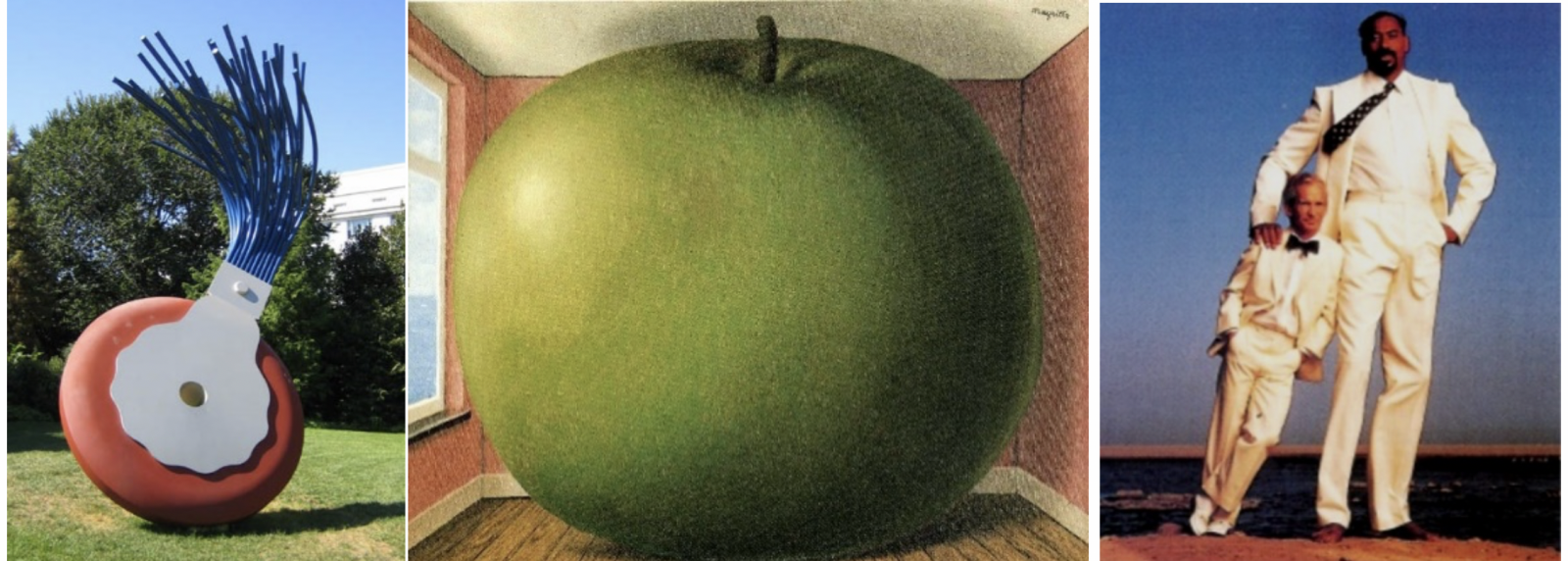Using good craftsmanship while they work with paper mache, students will create oversized donut sculptures. Recommended for 2nd Graders.
Form: a 3-dimensional area that has height, width and length.
Proportion: relationship of the parts to the whole object.
Scale: the size of a whole object in relationship to another object.
Symmetry: The weight of the sculpture is evenly arranged as a circle.
Armature: The hidden support inside some sculptures. In this lesson, it’s a balloon.
Craftsmanship: Using materials correctly, following directions, neatness.
Papier Mache: French for “mashed paper” soaked in glue or flour, water mixture that hardens when dry.
SESSION 1:
SESSION 2:
Claes Oldenburg is an American Pop artist. Pop Art was an art movement that began in the mid-to late 1950s in the U.K. and USA. It included colorful imagery from mass culture. Oldenburg likes to create dramatically oversized sculptures of everyday objects and display them in creative ways.

Students will:
Session 1 - Look at some images of donuts. Ask students to imagine holding one, and the way its form would feel.
Session 2 - Look at some images of donuts.
Paper Mache recipes from Paper Mache blog. Lesson written by Docents at Challenger Elementary.
21st Century Thinking Skills
Taking responsible risks, observing, visualizing, comparing/contrasting, determining main idea, finding evidence, problem solving, determining point of view, analyzing.
WA State Learning Standards
(VA:Cr2.1.2) a. Experiment with various materials and tools to explore personal interests in a work of art or design.
(VA:Cr2.2.2) a. Demonstrate safe procedures for using and cleaning art tools, equipment, and studio spaces.
(VA:Re7.1.2) a. Perceive and describe aesthetic characteristics of one’s natural world and constructed environments.
(VA:Re8.1.2) a. Interpret art by identifying the mood suggested by a work of art and describing relevant subject matter and characteristics of form. This happens if you talk about the happy, fun characteristics of Pop Art sculptures.
(VA:Re9.1.2) a. Use learned art vocabulary to express preferences about artwork. This happens when you describe the vocabulary words and you all use them during the lesson.
(VA:Cn11.1.2) a. Compare and contrast cultural uses of artwork from different times and places.
Arts Integration Opportunities
Math: use the concepts of scale and proportion as they relate to numbers and measurements. Eg. measure an action figure and then measure the student to compare the scale.
Science: discuss the properties of the paste and paint as they change from a liquid to a solid.
Writing: Procedural describing the steps to make the sculpture; fiction about how the donut got so big.
Spelling: add all vocabulary words to the classroom spelling lists.
Please note: These lesson plans are intended for non-profit use only. Use of these plans for commercial purposes should give attribution to the Issaquah Schools Foundation and be accompanied by a nominal donation at www.isfdn.org/donate. Thank you.
Fueling Success for Every Student, Every School